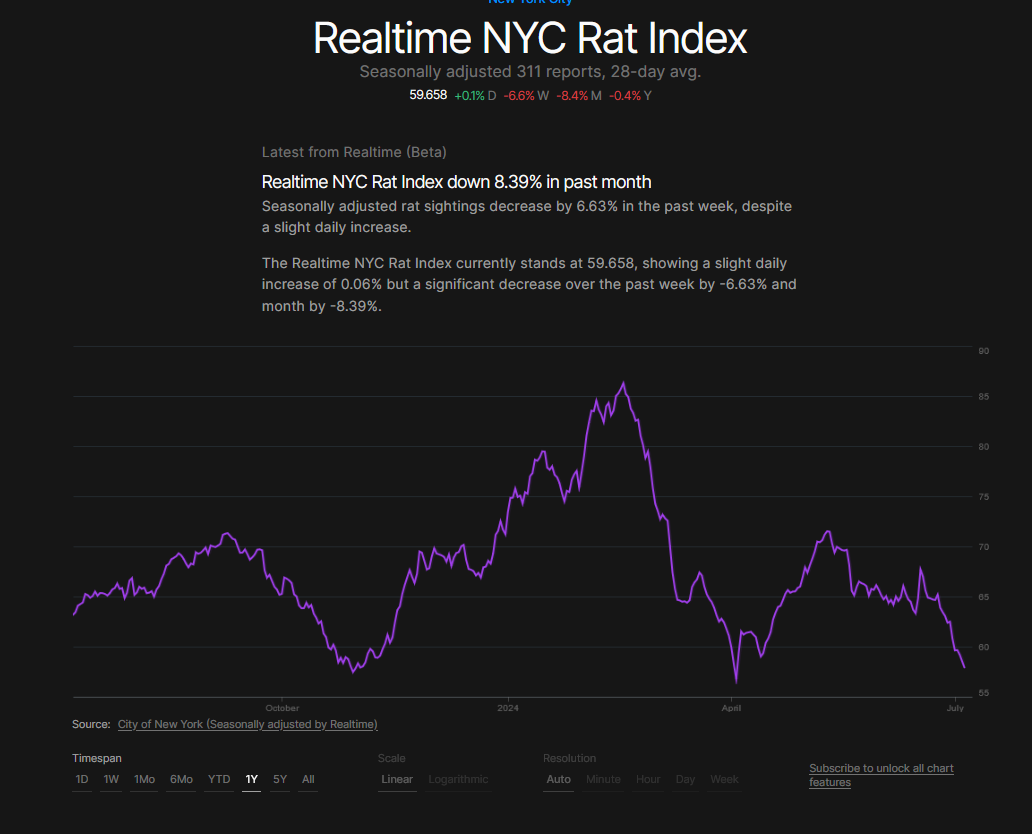
Ok, my last script was doing something kind of weird where I first did manual seasonal adjustment (to better simulate https://realtime.org/data/nyc-rat-index's) and then ran SARIMA with seasonal adjustment on this already-seasonally-adjusted data. When I use plain non-seasonally-adjusted ARIMA on the most recent 311 data, I get ~45% chance of being above 65. My updated script lives here.
In other rat news, harsh winter has managed apparently managed to knock the population down. I'm skeptical that this will by itself meaningfully affect the population come spring, especially when February temperatures are forecast to be in the 40s.
The linked chart pulls data from 311 service requests for rat sighings. I wrote a script to try to emulate the seasonal adjustment/rolling average from the linked chart and extrapolate to the end of 2025.
The New York City government will continue its ongoing efforts to curb the rat population in 2025. Despite the optimism of the linked article, I don't expect this to have any bearing on this market. Notice that the article focuses on declines in "Rat Mitigation Zones" that have been singled out for extra-aggressive extermination efforts, but our chart averages across all locations.
Two recent large anti-rat initiatives:
- April 1, 2023: Building superintendents must bring trash out at 8pm instead of 4pm: https://www.cbsnews.com/news/nyc-rat-czar-kathleen-corradi/
- March 1, 2024: Business are required to dispose of trash in curbside containers: https://www.nytimes.com/2024/03/01/nyregion/nyc-trash-containers.html
Eyeballing the chart doesn't make that anything special happened after those dates. Rats reach sexual maturity after 2-3 months and die after a year, so if the proposed near-future government initiatives were going to effective I'd expect to already have already seen impact from previous ones.
Rats are terrifying protean forces of nature. "The adult rat can squeeze through holes or gaps 1 inch (25 mm) wide, jump a horizontal distance of up to 4 feet (1.2 m) (or vertically from a flat surface to 3 feet (0.91 m)), survive a fall from a height of almost 40 feet (12 m),[2] and tread water for three days." Hurricane Ida appears to be the last thing to put a significant dent in the rat population. Unless God acts again within the next year it seems reasonable to cede 2025 to the rats. 57%.
